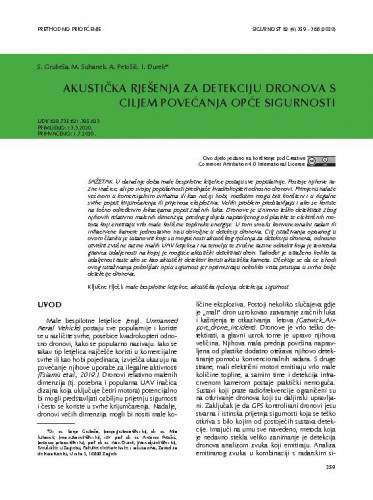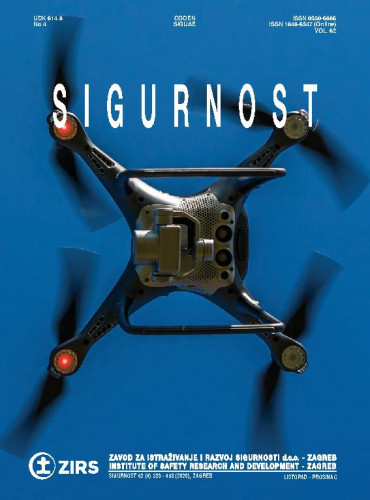U današnje doba male bespilotne letjelice postaju sve popularnije. Postoje njihove razne inačice, ali po svojoj popularnosti prednjače kvadrokopteri odnosno dronovi. Primjenu nalaze većinom u komercijalnim svrhama ili kao nečiji hobi, međutim mogu biti korišteni i u ilegalne svrhe poput krijumčarenja ili prijenosa eksploziva. Veliki problem predstavljaju i ako se koriste na točno određenim lokacijama poput zračnih luka. Dronove je iznimno teško detektirati zbog njihovih relativno malenih dimenzija, prednjeg dijela napravljenog od plastike te električnih motora koji emitiraju vrlo male količine toplinske energije. U tom smislu konvencionalni radari ili infracrvene kamere jednostavno nisu dovoljne u detekciji dronova. Cilj istraživanja opisanog u ovom članku je ustanoviti koje su mogućnosti akustičkog rješenja za detekciju dronova, odnosno utvrditi zvučne razine malih UAV letjelica i na temelju te zvučne razine odrediti koja je teoretska granica udaljenosti na kojoj je moguće akustički detektirati dron. Također je istraženo koliko ta udaljenost raste ako se kao akustički detektor koristi akustička kamera. Očekuje se da će ishodi ovog istraživanja poboljšati opću sigurnost jer optimiziraju nekoliko vrsta pristupa u svrhu bolje detekcije dronova.; In this day and age, small unmanned aerial vehicles are becoming more and more popular. Different types of these craft have been built over the years, with drones (quadrocopters) being the most popular. They are used mostly for commercial purposes and as a support in different hobbies, but they can also be used for illegal activities such as smuggling or transport of explosives. The use of drones in the vicinity of airports is a major problem. Drones are exceptionally difficult to detect due to their small size, their front end made of plastic, and their electric-powered engines that generate very little heat. For these reasons, conventional radars and infrared cameras are not sufficient for detection of drones. The purpose of this research is to determine the possibilities of acoustic detection of drones. The sound pressure levels of noise emitted by drones have been measured. Based on this data, the theoretical limit distance at which a drone can still be detected acoustically has been determined. A possible increase of this limit distance has been examined, if an acoustic camera is used as the acoustic detector. The outcomes of this research are expected to improve general safety due to the optimization of several different approaches to drone detection.
Sažetak

 Sigurnost : časopis za sigurnost u radnoj i životnoj okolini = Safety : journal for the safety in the work organisation and living environment : 62, 4(2020) / glavni urednik, editor in chief Željko Sven Bukovski.
Sigurnost : časopis za sigurnost u radnoj i životnoj okolini = Safety : journal for the safety in the work organisation and living environment : 62, 4(2020) / glavni urednik, editor in chief Željko Sven Bukovski.